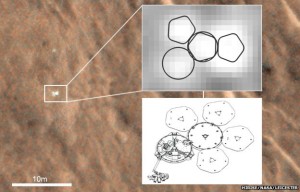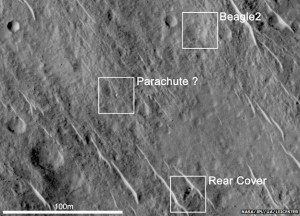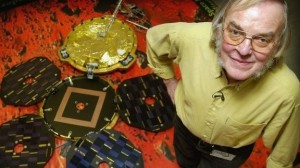Earlier this week came the news that a joint NASA and UK Space Agency and Leicester University announcement about Beagle 2, the British-led Mars probe, would be made on Friday. I have been twitching all week—hoping so hard that the news would be good. And it is!
At last—Beagle 2 has been found! Such great news, courtesy of NASA’s Mars Reconnaissance Orbiter, which sends back images of the planet’s surface from a height of between 250 and 316 km above Mars.
The MRO scientists have been searching for it for years, and at long last they have found Beagle 2 at its Christmas Day 2003 landing spot at Isisdis Planitia. No message was ever received from the probe, and so it was assumed that it had crashed or somehow been destroyed or rendered unable to send back data. Its fate remained unknown.
Now we can see that Beagle 2 landed intact, and due to some of the solar panel-bearing ‘petals’ failing to unfold, it could not generate the energy needed to send back data.
The lead scientist, Professor Colin Pillinger, sadly did not live to see this great day. He died last May, but is immortalised at a topographic feature on the surface of Mars: Pillinger Point.
I wonder if the landing spot of Beagle 2 will be named after its most recent arrival?
(I should add that I bear no truck with talk of the Beagle 2 mission being a heroic failure. It was an incredibly difficult mission achieved on a miniscule budget, and it should be remembered how challenging a successful landing on Mars is—the success rate is 51%. So to have got so close to achieving the mission goals is to be celebrated. And as Prof. Pillinger himself said, in that wonderful, warm West Country accent of his—there are no failures, just experiences providing valuable data from which to learn and progress.)




